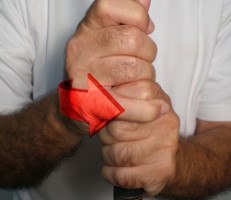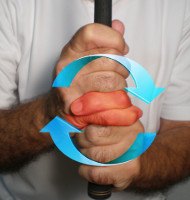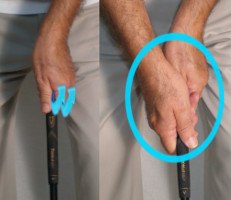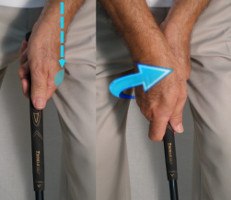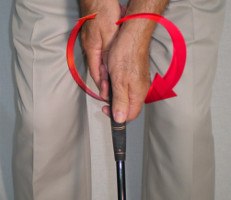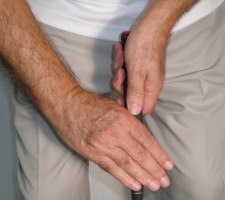Pros and Cons of Every Golf Grip Style |
Best Grip? Overlapping vs Interlocking |
Grip style: Interlocking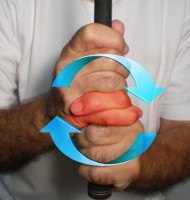 |
Hand position: Neutral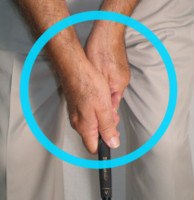 |
Putting grip style / hand position: Reverse overlap / neutral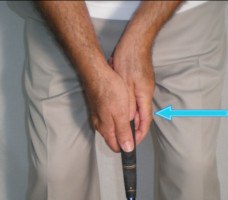
|
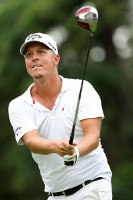
Want to see how it was done in the old days? Watch Fredrik Jacobson grip the golf club.
“Freddie,” as he’s known to fans and fellow players, uses a neutral grip that borders on weak, a la Ben Hogan. It’s a stark departure from the strong grip of the average modern pro.
When Jacobson sets up to the shot, the back of his left hand is nearly flush with his forearm; there’s very little angle at the wrist. Many tour players, conversely, show a pronounced angle here as they turn the left hand toward a strong position.
Jacobson’s right hand is in a classic neutral spot, too. Look at the “V” at the base of thumb and index finger and notice that it aligns neatly with the shaft. This means the hand is more on top of the club than underneath it, preventing a hard release through the ball that can cause big hooks.
Indeed, Jacobson’s tee shots tend to miss right more often than left – exactly what you’d expect from a player with his grip. Likewise, Jacobson’s one of the shorter hitters out there.
He makes up for it on the greens, though. Fredrik Jacobson’s grip with the putter is certainly unorthodox, but it’s been deadly of late. He led the PGA TOUR in strokes gained putting in early 2015, and ranked among the top 18 three times from 2011-14.
Much like Englishman Danny Willett, Jacobson folds his right hand pinky, ring and middle fingers around those same fingers on his left hand. He further unites hands to club by extending his left forefinger down the handle.
Golfers who battle excess wrist action might find a cure in Jacobson’s odd but effective putting grip.
